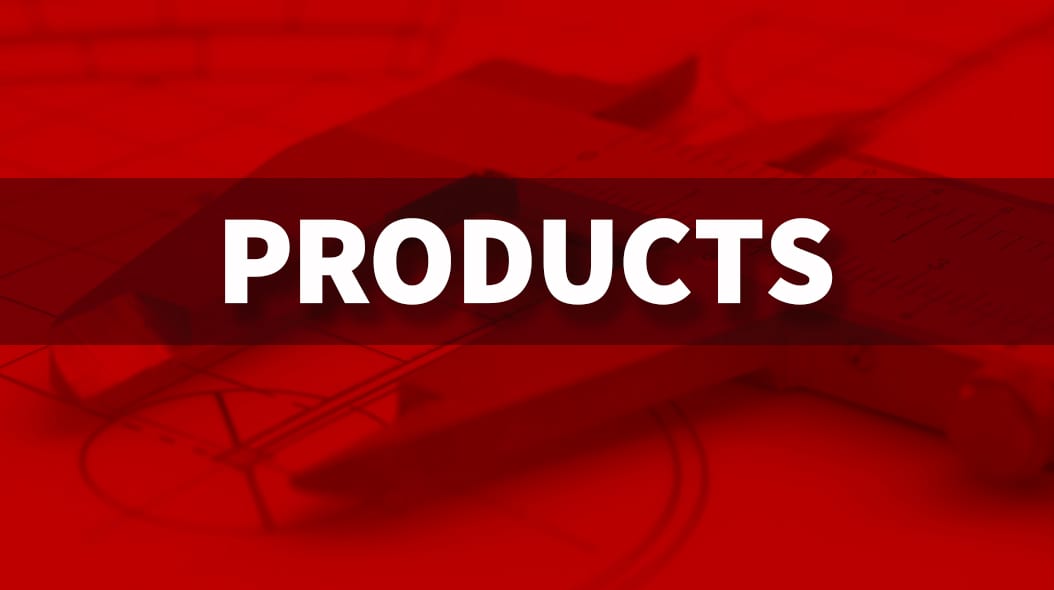H2 Deck By Bold Name
h2 xxxxxx
H1 xxxxxx
h2 xxxxx

Management

Keep in mind that standards such as ISO 9001:2015 and ISO 13485:2016 do not require a record for every activity, however, if an activity requires a record, it is stated as such in the standard. By Andrew Davison
What Does It Take to Have Successful Opening and Closing Meetings?
Management
H2 Deck Info By Paragraph Style Bold
Headline
The opening meeting is a vital step in the audit process as it sets the tone for the audit. Although the opening meeting may be short in time, the outcomes are critical to the success of the audit.
Why Use it?
To ensure the audit team and the auditee personnel fully understand all aspects of the audit. Team members are introduced and their roles are communicated to the auditee. The sequence of events is explained by the audit team. The auditee will cover any logistics as well safety procedures (i.e., Personal Protective Equipment (PPE) required, tornado shelters, emergency exit locations, etc.).
If the audit is going to be performed virtually, the opening meeting should consider logistics such as ensuring the platform (i.e., MS Teams, Zoom) to be used is functioning correctly and discuss a backup plan should technology issues occur. In addition, you should request permission in advance if you plan to take screenshots of any documents or keep any recordings thus considering confidentiality and security matters.
What does it do?
- Sets the tone for the audit
- Documents the attendees of the opening meeting (to be included with the audit report)
- Confirms the audit purpose, audit scope and audit criteria
- Confirms the audit agenda and if any changes are needed
- Discusses responsibilities of auditee management
- Confirms auditee’s working hours
- Confirms the time of the daily debriefing
- Confirms the time and date of the closing meeting
- Emphasize objectives of audit / positive approach
- Confirms the timing of the audit report distribution
- Considers the risks associated with virtual or remote audits
How do I do it?
- The opening meeting should be conducted with the auditee’s management and those responsible for the processed to be audited. The level of detail that is needed for the opening meeting is dependent upon on the audit purpose and audit scope. For example, for a first party (Internal) Audit, an email or a brief meeting explaining how the audit will be conducted and who the auditors are is usually sufficient. For second party (supplier) audits, it’s recommended that the opening meeting is more formal and covers the appropriate details as discussed above. A sample opening meeting agenda is provided below (reference Figure 3.1) that will greatly assist the auditor in covering all aspects of the audit process during the opening meeting.
Tip: Good Audits start with Good Introductions
We have all heard “You never get a second chance to create a first impression.” In conducting effective audits, it’s important to effectively manage communications and start off on the right foot. Good audits start with good introductions and the ability to create a positive rapport with the auditee. Ask for the auditee’s name and repeat it back to them to increase the chances you will remember it. Also, take the time to write it down in your audit notes and ensure you spell it correctly – this may be important for the audit report. Let the auditee know that you are recording their name and at this point it may be a good time to remind the auditee that the audit is about the “process” and less about the “person” just to relieve any audit anxiety they may have.
When the auditee understands that there is nothing to fear during the audit, now that you have relieved the audit anxiety and stress with a great introduction, they will cooperate and contribute providing audit evidence and answers to ensure an efficient, effective, value-added audit. Making a positive first impression through a good introduction sets the stage for the audit. It helps to build rapport with the auditee making the audit more conversational and sets a positive tone for the rest of the audit.
Tip: As nerves may set in during the opening meeting, it’s recommended to develop an opening meeting agenda to ensure all aspects of the opening meeting are reviewed. In addition, an attendance form should be developed in advance to ensure you have a record of the opening meeting attendees.
Figure 3.1
Sample Opening Meeting Agenda for a Second-Party (Supplier) Audit:
Introductions:Performroundtableintroductionsandverifytherolesofeveryoneinthe room.HavethosepresentattheOpeningMeetingsigntheattendanceformasarecord |
AuditPurpose:DiscussthepurposeoftheAudit(i.e.,theQualityManagementSystem for ABC Company requires Critical Suppliers to be audited on an annual basis). |
AuditScope:StatetheAuditScopeasindicatedontheAuditAgenda. |
ApplicableCriteria/Standards:StatetheapplicablestandardsfortheAudit(i.e.,ISO 13485:2016, ISO 9001:2015, the executed Supplier Quality Agreement, etc.) |
AuditObjectives:StatetheAuditObjectives(i.e.,“Assesstheconformityofthequality management system compared to requirements of the Standards” / “Assess the implementation and effectiveness of the quality management system and in particular thecapabilityofthemanagementsystemofthecompany”) |
Audit Agenda:DiscussanychangesthatmaybeneededtotheAuditAgendabased onavailableresourcesandtheauditeesworkinghours(considerlunchandbreak times). |
AnticipateddurationofAudit(closingmeetingschedule):Statethedurationofthe audit and confirm the date & time for the Closing Meeting. |
Organizational Changes: Ask if there’s been any significant organizational changes since the last audit and document accordingly. |
AnyPertinentLogistics:DiscussanyPersonalProtectiveEquipment(PPE)requirementsandsafetymeasuressuchasemergencyexitlocationsortornado shelters.Discusslunchplansasneeded(recommendworkinglunchonsite). |
Audit Process: Make brief statement of how theaudit will be conducted(i.e., includes verifying positive objective evidence of conformity through review of Company Procedures,WorkInstructions,andQualityRecords).Rememberyou’reauditingfor conformities,notnon-conformities. |
Audit Findings and Appeals Process: inform the auditee of the rules around nonconformances(majorandminor)andopportunitiesforimprovement(OFIs).Inform the auditee of their right to appeal if they have a concern about a nonconformance or theconductof auditor. |
Checklistquestions(ifused):Explainyourchecklistsystemifused. |
Previous Audit Observations: Discuss previous audit nonconformances / opportunitiesforimprovementasapplicable.Lettheauditeeknowyouwillfollowupon these items during the course of the audit. |
AuditReport:InformtheauditeeastowhentheycanexpecttoreceivetheAudit Report. |
AuditFollow-up:Informtheauditeeoftheprocessforcorrectiveactionshoulda CorrectiveandPreventiveAction(CAPA)oraSupplierCorrectiveActionRequest (SCAR)beissuedforanauditnonconformance.Thisshouldincludeprovidingthe auditee with an expected timeline for their response. |
Thanktheauditees:ConcludetheOpeningMeetingbythankingallthosein attendance for their time as well as their cooperation during the audit. |
Data Collection
Why Use it?
- To use as audit evidence to compare against the stated audit criteria and make conclusions to determine if audit findings are warranted.
What does it do?
- It provides information that’s relevant to the audit objectives, scope and criteria, including information relating to interfaces between functions, activities and processes.
How do I do it?
Gathering audit evidence (i.e., collecting data) is a vital part of the audit execution phase. There are many different techniques however, we will focus on a few of the most common methods: visual observations, examination of records, and employee interviews.
Visual Observations: Yogi Berra (a famous baseball player known for his “Yogi- isms”) once said that “you can observe a lot just by watching.” As a Quality System Auditor, this is very pertinent. Typically, most second-party audits (and sometimes first- party audits) will start with a tour of the facility. As an auditor, this is an excellent opportunity to gather evidence by simply looking around (including looking up!). You may notice housekeeping issues that could be symptoms of larger issues associated with product identification and traceability and preservation of product. These may be areas that you would want to perform deeper dives into during the course of the audit. In addition, the visual observation technique may uncover “uncontrolled” documents (such as sampling plans) taped on machines or on walls at incoming inspection. This would lead to questions as to how these documents are controlled and what occurs when these documents are revised.
Examination of Records: Records should be examined during the course of the audit to ensure that if the auditee states that an activity has happened, we can review the review and conclude that the stated activity actually happened. Keep in mind that standards such as ISO 9001:2015 and ISO 13485:2016 do not require a record for every activity; however, if an activity requires a record, it is stated as such in the standard. Records should be complete, accurate and concise in order to be considered trustworthy wherein an auditor can draw a conclusion as to whether or not that this record is an accurate representation of the activities that it vouches for. When reviewing records, ensure they’re filled in completely. Any blanks / not applicable spaces should contain “N/A” or a rationale as to why it’s not filled in. Records should have verifiable dates listed on them. If the records are for meetings (i.e., management review, design reviews, etc.) the participants as well as their job functions should be listed. Actual results should be documented on the records. If the record was for a part inspected in incoming inspection, what were the results? Lastly, if there are any action items noted, these should be listed on the record. Tip: When verifying dates on records, if you see dates listed such as January 1, July 4, or December 25 (which are all U.S. holidays), there’s a good chance these records are not trustworthy.
Excerpt from the QMS Auditor Memory Jogger [2023 (Goal QPC)]
